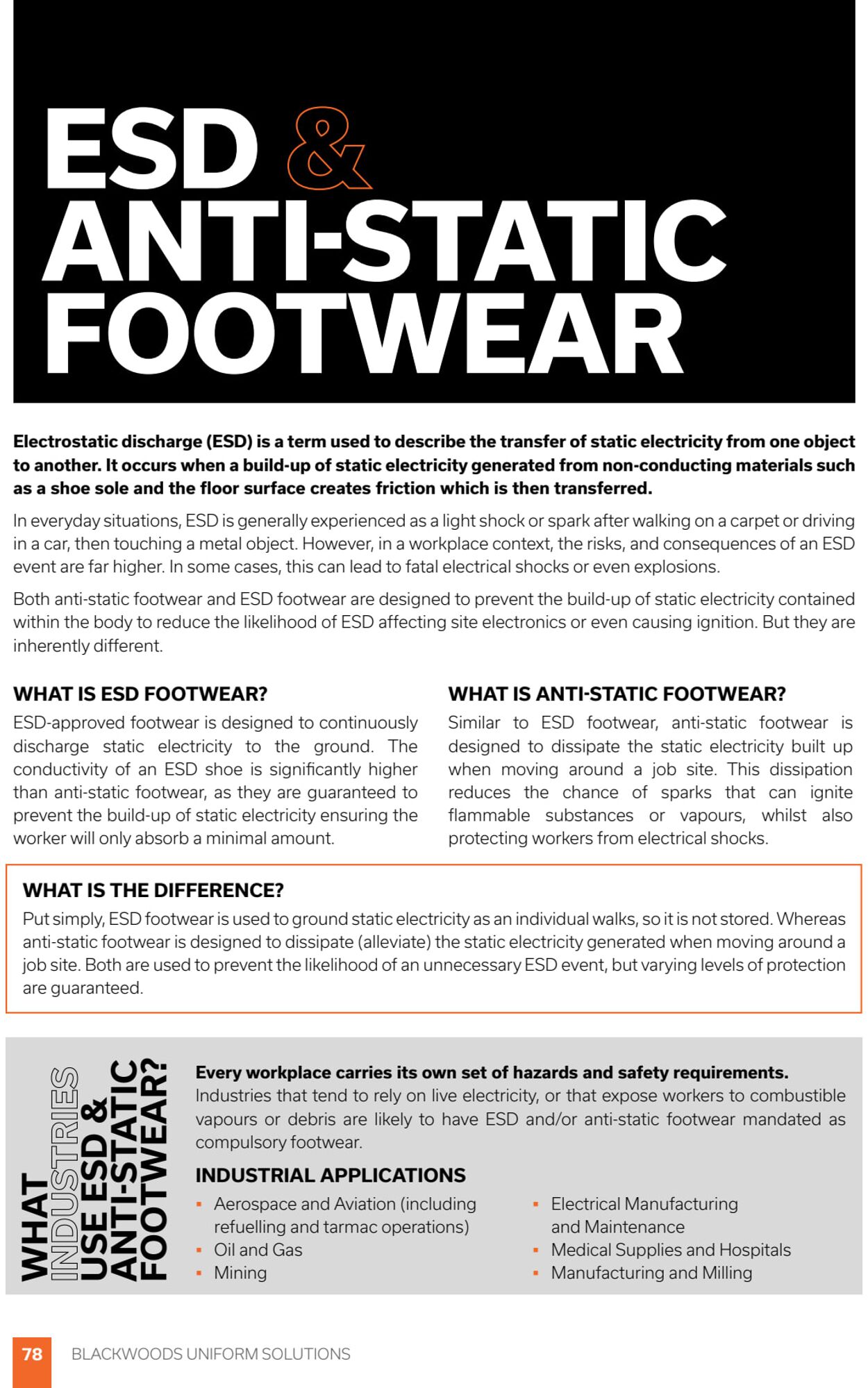













Products in this catalogue
=<)» ea ANTI-STATIC FOOTWEAR Electrostatic discharge (ESD) is a term used to describe the transfer of static electricity from one object to another. It occurs when a build-up of static electricity generated from non-conducting materials such as a shoe sole and the floor surface creates friction which is then transferred. In everyday situations, ESD is generally experienced as a light shock or spark after walking on a carpet or driving in acar, then touching a metal object. However, in a workplace context, the risks, and consequences of an ESD event are far higher. In some cases, this can lead to fatal electrical shocks or even explosions Both anti-static footwear and ESD footwear are designed to prevent the build-up of static electricity contained within the body to reduce the likelihood of ESD affecting site electronics or even causing ignition. But they are inherently different WHAT IS ESD FOOTWEAR? WHAT IS ANTI-STATIC FOOTWEAR? ESD-approved footwear is designed to continuously Similar to ESD footwear, anti-static footwear is discharge static electricity to the ground. The designed to dissipate the static electricity built up conductivity of an ESD shoe is significantly higher © when moving around a job site. This dissipation than anti-static footwear, as they are guaranteed to reduces the chance of sparks that can ignite prevent the build-up of static electricity ensuring the | flammable substances or vapours, whilst also worker will only absorb a minimal amount. protecting workers from electrical shocks. WHAT IS THE DIFFERENCE? Put simply, ESD footwear is used to ground static electricity as an individual walks, so it is not stored. Whereas anti-static footwear is designed to dissipate (alleviate) the static electricity generated when moving around a job site. Both are used to prevent the likelihood of an unnecessary ESD event, but varying levels of protection are guaranteed. Every workplace carries its own set of hazards and safety requirements. Industries that tend to rely on live electricity, or that expose workers to combustible vapours or debris are likely to have ESD and/or anti-static footwear mandated as compulsory footwear. INDUSTRIAL APPLICATIONS INDUSTRIES USE ESD & ANTI-STATIC FOOTWEAR? E Aerospace and Aviation (including Electrical Manufacturing = refuelling and tarmac operations) and Maintenance Oil and Gas Medical Supplies and Hospitals s Mining Manufacturing and Milling wo i t
| Name | Details |
|---|